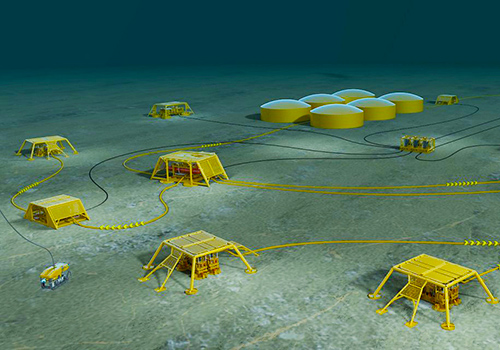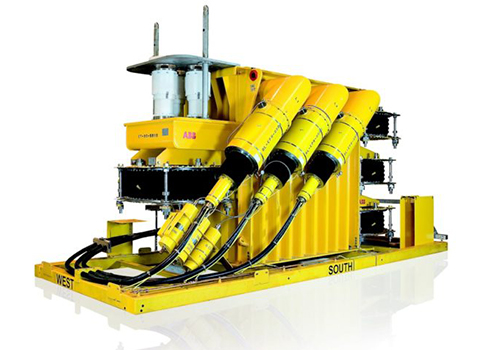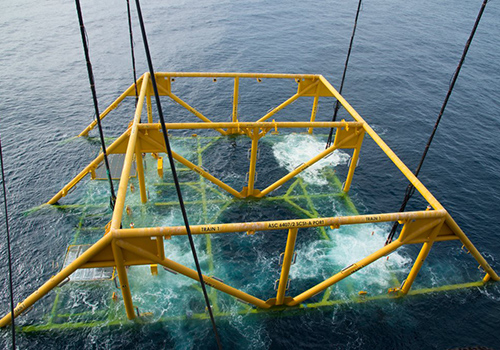Subsea Factory Insight: From Dream to Reality
The challenging work of subsea production is benefiting from game-changing innovation, as some of the biggest Oil & Gas companies collaborate, to transform the concept of a subsea factory into reality.
The subsea factories project, to automate the whole production process at greater distances, in deeper waters, and in harsher environments, has been long in the making.
Originally, Statoil (now Equinor) presented the concept of a subsea factory back in 2012, describing it is as a standalone subsea production system on the seabed. Its aim is to carry out tasks subsea, previously carried out topside, such as single and multi-phase boosting, gas compression, gas-to-liquid and liquid-to-liquid separation as well as water reinjection.
In 2013 the Oil & Gas industry took another step closer to a functional subsea factory, when the Subsea Power Joint Industry Program (JIP) was formed between ABB, Equinor (previously named Statoil), Chevron and Total.

Illustration of Subsea Factory by Equinor
Siemens has also been working on a project, supported by Chevron, Eni Norge, Equinor and ExxonMobil to develop a subsea power system, distributing electricity under the water.
It’s not hard to see why there is a great deal of excitement for subsea factories, with new subsea technology having the potential to save Oil & Gas companies millions.
Equinor has even predicted CAPEX savings of $500m for one of its project.
The benefits of a subsea factory
Aside from the cost savings, there are a number of benefits to powering the whole Oil & Gas production process on the seabed as opposed to on an oil rig.
- Efficiency and less power consumption
Dr Jan Bugge, ABB vice-president of subsea technology and project director of the ABB-Statoil Subsea Power JIP said the project will get, “more out of the ground because if you put the equipment on the seabed, you can produce much more efficiently. Power consumption goes down and you’re also closer to the wells.” - Work in deeper water and harsh environments
The subsea technology helps facilitate deepwater production in remote locations, opening up opportunities in the Gulf of Mexico, offshore Brazil and even the Arctic, with reduced operational costs. Working at 3,000m it opens up possibilities to work on highly corrosive ocean floors.
Also, by building a sustainable and tested factory under the water, businesses are less susceptible to harsh weather conditions, such as hurricanes, that can exist topside in some Oil & Gas locations. - Lower environmental impact
A subsea factory will reduce the carbon footprint of production with unmanned sites, which are controlled remotely. There will be no need for ships as oil and gas is transported via a pipeline, which also reduces disruption to marine life, following its initial installation. The energy is cleaner as power can be taken directly from shore rather than with gas turbines offshore. Because the temperature is lower at subsea, the efficiency increases when compared to topside, with components running at their optimal level.
Bugge also added, “The lower the temperature is inside the equipment, the better the equipment can handle it. It’s like your mobile phone; if you leave it in the sun, it’s not really good for it in the long run. So basically, you eat lifetime by temperature. You need to have as low a temperature as possible. You want to put equipment down there that can last for up to 30 years.” - Other benefits
Working solely subsea increases the safety of operations as most activity is carried out remotely. Some other benefits include simplified decommissioning, a boost in oil production with increased flow rates and improved Oil & Gas recovery rates to name a few.
The technical challenges of a subsea factory
Businesses, such as ABB and Equinor, have been focused on engineering solutions to tackle the challenges of creating a subsea facility for many years. Some of the issues they have tackled include:
- Building a safe system that works underwater
- Underwater control systems
- Overcoming water/electricity challenges
- Mechanical considerations
- The possibility of leaks and breaks
- Underwater extreme pressures
- Tides and water temperatures
- Water depths
- Component maintenance
- Operating efficiencies
Many of the challenges, such as electricity distribution, have been solved through collaboration, R&D and careful testing. We have gathered a few examples of this ground-breaking subsea innovation below.
Distributing electricity in water
10 years ago distributing electricity in water would have been unbelievable, but through investment and R&D, the dream has become a reality.
ABB has designed technology that will transmit 100MW of power up to 600kms from the shore and at depths of 3000 meters.

Image of Subsea Transformer B built to distribute electricity on the ocean floor
Siemens has also worked to find a solution to the electrification of the subsea factory, creating a stable and safe power supply called the Siemens Subsea Power Grid.
Bjørn Rasch, Head of Subsea Power at Siemens said, “The system enables subsea processing at a completely different scale than before, and we are thus one step closer to the realisation of subsea factories.”
Both projects have been in development for more than five years. ABB is in the final stages of testing for its prototype this summer and expects to install its first commercial subsea power system in 2020. Siemens tested its version in shallow water in Norway last November 2018 and is now talking with clients about putting its first unit in to the field.
Equinor tackle subsea compression levels to improve recovery of gas
Equinor tackled the problem of compression levels back in 2015, with the launch of its Åsgard subsea gas compression technology. This development was an important part of accessing oil and gas in hard to reach places such as deep waters and harsh environments - a component needed for subsea factories.
At the end of 2015, analysis showed that reservoir pressure was looking too low to maintain stable flows of production on Åsgard B platform. Compression was needed to ensure high gas flows and recovery rates. The new technology increased gas recovery from the Mikkel and Midgard gas reservoirs in the Åsgard field by 282 million barrels of oil equivalent.

Åsgard subsea gas compression (Photo: Øyvind Hagen/Equinor)
Saipem’s Sonsub’s Hydrone-R underwater intervention drone
An important part of the subsea factory’s maintenance is the future inspection and intervention, which could be solved by technology such as Saipem’s new Sonsub’s Hydrone-R underwater intervention drone.
According to Saipem, “The vehicle can remain underwater uninterruptedly for 12 months, making it the first ever resident subsea drone. In this resident mode, Hydrone-R features wireless operability and can be connected to subsea infrastructures via through-water communication links. It can cover an area within a 10-km radius for inspections and interventions.”
The future of subsea job roles
Predictions for the launch of fully functional, wide spread, subsea factories brings differing opinions. Bjørn Rasch, Head of Subsea Power at Siemens believes that subsea factories will become a reality in the close future.
Hani Elshahawi, digitalization lead for deepwater technologies at Shell, on the other hand believes “It will require decades” and “a more gradual and lengthy transition.”
But with so much technology already launched or in its final testing stages, there is no denying that subsea job roles are changing.
Simon Calvert, Client Development Manager at First Recruitment Group said, “With so much new subsea technology, there will be an increased demand for specialist design and engineering roles, related to subsea installation methods and real-time analysis. Designing for the seabed will require working to different standards to ensure a safe marine environment. Other subsea roles predicted to increase are those for coating and insulation, heavy lifting, trenching, ROV and intervention. In fact, we are already seeing an increase in demand for specialist subsea roles during 2019, as our clients focus more on subsea projects.”
Whether the near future involves subsea factories or future developments around umbilical’s, subsea tiebacks, drones and Christmas trees, there is no denying that subsea innovation remains a bright spot within the Oil & Gas industry.
Specialist subsea recruitment advice
If your business is looking for help hiring subsea candidates we can help devise a strategy that works for your individual business. Contact our Subsea specialists on +44 (0) 1925 907000 or email recruit@firstrg.com.
